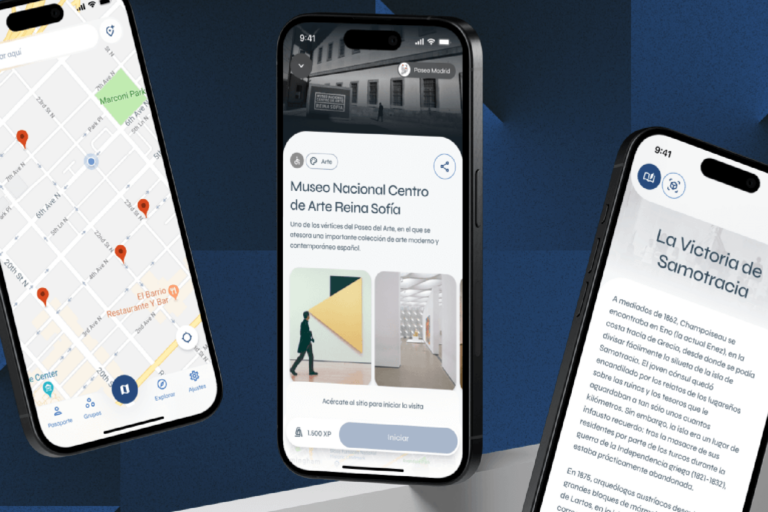Artgonuts is committed to responsible, respectful, and conscious tourism... because it is possible. Under this premise, the Spanish software consultancy Secture has developed the Artgonuts platform, which makes tourism more accessible and conscious through interactive maps and AI, changing the way we explore cities and their cultural heritage.
From your cell phone and using technology based on geopositioning, artificial intelligence developments, and interactive maps, this application aims to open a new window into the world of art, culture, and responsible and conscious tourism.
The app allows users to explore cities authentically and offers local, cultural, and gastronomic recommendations based on their interests. The project is led by three Spanish developers: Javier Toral (CEO), Javier Martínez (COO), and Luis Mata (CTO). "We all know the problem of feeling left out of events and cultural activities in our city... or not understanding what we see when we travel or fall into tourist traps," says Javier Toral.
Responsible tourism
Using narratives adapted to new forms of consumption is one of the keys to recovering the dissemination, appreciation, and recognition of our art, history, and culture. Artgonuts aims to give visitors access to the visible layers that coexist in everyday urban spaces through geopositioning historical heritage on interactive maps, discovering the charm of cities as if they were locals.
"Within this problem, we have developed this exploration application that generates hyper-personalized content where there is also a cultural agenda, and we connect with local communities so that users can experience the most authentic side of the city," adds Toral.
Artgonuts gamifies the visitor experience through immersive technologies and can generate unique and customized content for each user. The idea is to ensure that recommendations evolve each time a user moves around an environment and can adapt to the visitor's context through geopositioning. Content is created in real-time, ad hoc,, and dynamically, and can be in text, audio,, or augmented reality formats.
Once the Artgonuts app is downloaded (now in beta), the user has access to their own cultural identity with a personalized passport so that recommendations—through semantic fields and AI—can be saved along with the user's points of interest or alternative routes. In addition, the app allows sharing of any relevant data or discoveries with others, making it a collaborative tool to further scale plans.
What is clear is that Artgonuts "is an application that invites local exploration; we are not an app that allows you to travel from your living room," warns Javier Toral. Tourists will be able to have unique experiences with local communities and cultural institutions and have access to an updated cultural program that fully connects them with the city they are visiting.
Some projects
In Madrid, for example, a project has been developed that highlights the role of women such as Clara Campoamor and the group 'Las Sinsombrero.' In addition, together with Thyssen Lab, they plan to create a small tour of the masterpieces in the permanent exhibition by September.
Artgonuts has also developed special routes for people with reduced mobility and is working on developing content with Galician writers and universities. In direct connection with the art world, in Málaga, they have taken Picasso's works out of the museum to tell the story and context of the works while highlighting the importance of the landmarks of the Andalusian city.
This latest project has received various recognitions, from a competition organized by AEDAS Home to the award for Best Cultural Startup at the recent CM Málaga. Artgonuts is currently a semi-finalist in the culture, art, and fashion category of the Impact Social Cup, the Spanish competition for social entrepreneurship.
Currently, the startup is in a funding round of up to €350,000 by the end of the year, of which they have closed almost half, around €125,000. The aim is to continue to grow and achieve a real change in the tourism model and the way of living, understanding, and enjoying culture and art.





